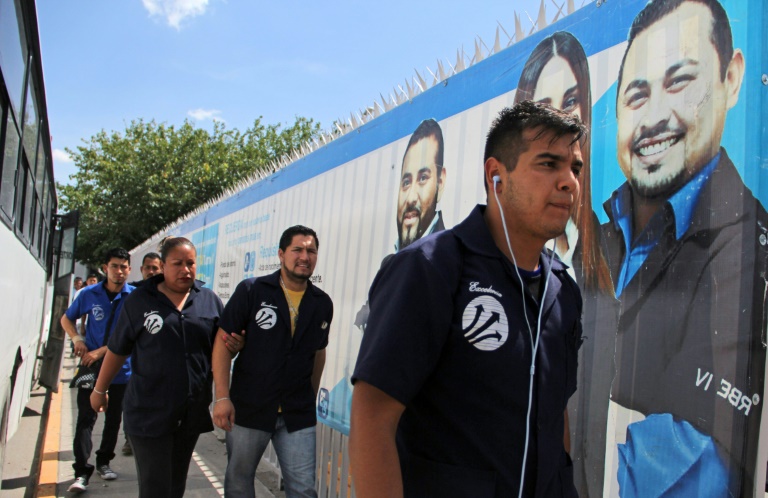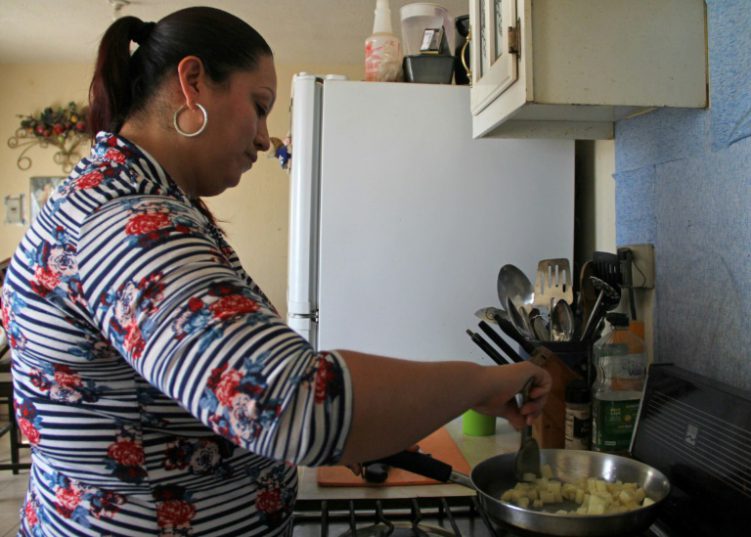Pope Francis dies after Easter Sunday appearance
All were drawn to this desert city on the US-Mexican border by the industrial revolution fueled by the North American Free Trade Agreement. And all are fearful for its future.
If there is a place that symbolizes NAFTA’s impact on Mexico, it is Juarez, the city that sits across from El Paso, Texas.
Since the free-trade deal was launched 23 years ago, the city’s population has grown some 75 percent, to 1.4 million people.
They come from all around Mexico, looking for a better life working in the so-called “maquiladoras” — factories that assemble imported parts, then export them back across the border.
Their cheap labor has helped make Mexico a major exporter: since NAFTA took effect in 1994, Mexican exports have grown more than seven-fold, to $374 billion last year — some 80 percent of which went to the United States.

Since the North American Free Trade Agreement was launched 23 years ago, the population of Mexico’s border city of Juarez has grown 75 percent, to 1.4 million people
Canada, Mexico and the US are due to begin renegotiating NAFTA this week at the insistence of President Donald Trump, who has called it the “worst trade deal in the history of the world” and says it has shipped American manufacturing jobs south of the border.
In Juarez, that has residents anxious about their newfound prosperity — if that is what scraping by on factory jobs that pay an average of $2.30 an hour can be called.
That is about one-tenth the average factory wage in the United States. More than 30 percent of Juarez residents say they do not make enough money to get by, according to a recent poll.
– Roof over your head –
But it’s better than working in the fields as a farmhand, says Maria Martinez, 34, who moved here a decade ago from the southern state of Oaxaca.

Adriana Aguero moved to the Mexican border city of Juarez for work 25 years ago
“At the maquila, you have a roof over your head. You’re not hot, or cold. They feed you — unlike back where I come from,” she said.
Martinez works in an auto parts factory that sells to Ford, among other clients.
The US auto giant was one of the first to set up shop in Mexico, well before NAFTA. It was also the first to cancel a major investment here after Trump’s election win: a $1.6 billion plant whose cars and jobs will now go to Michigan instead.
“He doesn’t want to leave anything here,” Martinez, a hardy woman with a sly smile, told AFP in the sweltering room that serves as bedroom, living room and dining room for her, her partner and their two children.
Her sister and brother-in-law live in the room next door. But at least she owns this house — purchased on 10 years of factory wages.
“They give us the chance at a stable job,” said Adriana Aguero, 40, who moved here from the state of Durango 25 years ago.
A single mother of three, she is proud that she is able to support her kids on her own, and plans to “sacrifice and save” to pay for them to have a good education, she said.
– Better life? –
Renegotiating NAFTA could be a chance to rethink Mexico’s economic model and improve conditions for its workforce, said Fernando Holguin, a lawyer at Juarez firm Rubio Villegas, which specializes in helping foreign-owned factories.
That could in fact align with the Trump administration’s demands.
“What (Washington) is saying is that Mexico has to impose (labor) conditions more similar” to those in the US “so that the United States can remain competitive to hang on to manufacturing investments,” he said.
That is on a long list of sticky issues as negotiators sit down Wednesday in Washington to begin charting the future of the three countries’ trade relationship.
That same day, a young man from the southern state of Chiapas will become Juarez’s newest arrival: 20-year-old Gildardo Lopez’s brother.
Lopez himself got a job in a factory here seven months ago.
“He asked me how it was going,” said the former farm worker.
“I told him it was better than there.”
Download our app